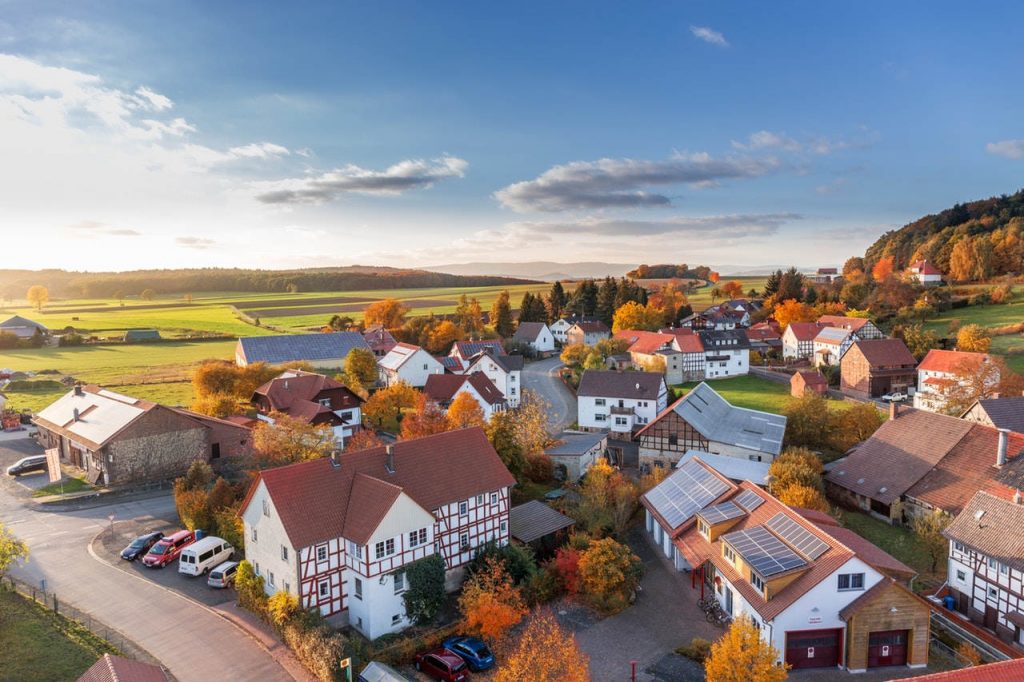
Are you looking to purchase a new home with no down payment?
Have you been hearing all the buzz about USDA loans and are curious to find out more about how USDA loans work?
Well, you’ve come to the right place – USDALoanCalifornia.com.
USDA guaranteed mortgage loans have helped more people have the ability to buy homes with no down payment than any other type of financing out there.
USDA Loans are:
- Easier to Qualify for – because they’re guaranteed by the federal government, lenders are more likely to give you the kind of loan that you need.
- Have No Down Payment – Unlike most other types of mortgage financing, USDA mortgages in California require no down-payment which makes it easier for people to own homes.
- Allow Lower Credit Borrowers to Qualify – because USDA guaranteed loans are backed by the government, those with a “less than perfect” credit history have an easier time getting approved for an USDA loan.
While other lenders look at every way to deny your mortgage loan, we look at every way to approve it!
As a Direct USDA Mortgage Lender, we offer the amazingly low USDA mortgage rates in California and competitive closing costs when it comes to your USDA mortgage. We are experienced USDA mortgage professionals that will help guide you in the right direction, always keep communication open so you can close on time, and answer all of your questions along the way.
Getting started with a USDA loan is really easy.
It’s fast, free, and takes less than 30 seconds!
What is a USDA Mortgage?
USDA loans are a fixed rate mortgages with 30-year full amortizations, which provides for a stable payment over the life of the loan, thus giving the borrower security. USDA loans DO have a small monthly MI payment.
Here’s a quick video explaining it as well:
USDA Eligibility Requirements for Rural Home Loans
Since there are restrictions, understanding USDA eligibility for the USDA Loan Program is very important. It is a good idea to find out the eligibility based off your household income and the location of the home you are planning on buying or refinancing.
Like we tell everyone, a USDA loan is not for everyone; it is in fact a small box, and you have to fit inside it.
USDA Income and Property Requirements
If you are looking for information on the USDA Home Loan offered through USDA Rural Development you’ve landed in the right place. This particular loan program seems to have many names. It is often called the USDA Rural Home Loan or Guaranteed Home Loan.
No matter the name it all comes from the same place and has the same requirements. 100% financing is the cornerstone of USDA financing. Other than VA home loans which only Veterans can apply for, USDA home mortgage is the only other true 100% option out there.
We will go over most USDA loan guidelines but keep in mind some of these may vary from lender to lender.
USDA Mortgage Eligibility

To be eligible, applicants must:
- Have an adequate and dependable income.
- Be a U.S. citizen, qualified alien, or be legally admitted to the United States for permanent residence.
- Have an adjusted annual household income that does not exceed the moderate income limit established for the area. A family’s income includes the total gross income of the applicant, co-applicant and any other adults in the household. Applicants may be eligible to make certain adjustments to gross income— such as annual child care expenses and $480 for each minor child—in order to qualify. Here is an automated USDA income eligibility calculator for USDA to help out.
- Have a credit history that indicates a reasonable willingness to meet obligations as they become due.
- Have repayment ability based on the following ratios: total monthly obligations / gross monthly income cannot exceed a given threshold.
USDA Property Eligibility
USDA loans can be geographically and income restrictive.
Typically, towns on the outskirts of larger cities with populations below established thresholds qualify, however that should not discourage you from exploring USDA financing because there have been many instances where there are actually USDA eligible areas in USDA ineligible counties!
This sounds weird, but 100% true.
You can search USDA property eligibility for your home search. If you have any questions, we can help!
- Guaranteed loans can be made on either new or existing homes; Existing homes must be structurally sound, functionally adequate, and in good repair. There are no restrictions on the size or design of the home financed.
- The home must not be used for income-producing purposes; aka Farm or Ranch agricultural exempt properties.
- Homes must be located in rural areas. Rural areas include open country and places with populations below USDA-established limits, with some flexibility for certain towns and cities based on current guidelines.
USDA Guaranteed Rural Housing Loan Program

- Loans may be for up to 100 percent of appraised value or for the acquisition cost, whichever is less.
- No down-payment is required.
- Mortgages are 30-year fixed rate at market interest rates.
- Loans may include funds for closing costs, the guarantee fee, legal fees, title services, cost of establishing an escrow account and other prepaid items, if the appraised value is higher than sales price. Sellers may contribute to the buyer’s closing costs.
- Home buyers make application with participating lenders.
- Buyers must personally occupy the dwelling following the purchase.
- Loans may be made to refinance either existing USDA Rural Development Guaranteed housing loans or our Section 502 Direct housing loans.
- For purchase loans, a one-time guarantee fee is charged to the lender.
USDA Loan Limits in California 2025
The USDA doesn’t set loan limits.
Instead, they base the maximum loan amount off of the borrower’s ability to qualify meaning as long as you can afford it, it’s yours.
There is however a USDA loan program called the Single Family House Direct Program where you not only have to know which counties are eligible, but you also have to keep in mind that each one of these counties has loan limits that the borrower cannot exceed.
Contact Danny Nassar – (512) 743-5512 – for information about current loan limits.
Source: United States Department of Agriculture
California USDA Income Limits 2025
Surprisingly, the USDA income limits in California are pretty liberal and are based on the total projected income for all adults living in the household. The USDA loan income limits vary between all counties though so it is a good idea to see if you qualify because you cannot exceed these income limits.
Contact Danny Nassar – (512) 743-5512 – for information about current income limits.
USDA Mortgage Calculator
Figuring out how much of a mortgage you qualify for can sometimes be confusing, which is why we made a USDA mortgage calculator specifically for you.
You’ll find out everything you need to know such as how much you should be able to get approved for, your monthly mortgage payments including taxes and insurance as well.
All you have to do is enter in your income and expenses, and everything else will be instantly calculated for you.
Check out our USDA mortgage calculator here.
USDA Mortgage Loan Rates
When looking to find amazingly low USDA rates in California, please keep in mind that they do change daily, sometimes more than once.
Some factors that will affect the average USDA rural development loan rates in California are the rate-lock period, the contract closing date, etc.
Here’s a very helpful video that explains how mortgage rates really work, regardless of what the media and newspaper advertise:
When it comes to the USDA mortgage, we are experienced mortgage professionals that will help guide you in direction you want to go.
USDA Loan FAQ

General
If I am ready to get started, what is the first step?
You need to get pre-approved to find out where you stand before you go out and begin making offers on homes.
What is a USDA program?
USDA home loans, also known as the USDA Rural Development Guaranteed Housing Loan Program, is a mortgage loan offered to rural property owners by the United States Department of Agriculture.
Why haven’t I heard much about these USDA rural development loans?
For the last few years there have been other mortgage programs that were popular and offered zero down payment and easy qualification. There was less use for the USDA Mortgage Program during those times. Now mortgage lending programs are much tighter and USDA is one of the few remaining programs with 100% financing and very favorable terms.
What is the downside to a USDA loan?
Nothing financially, but USDA loans are geographically and income restrictive. Typically towns on the outskirts of larger cities and less than 30,000 residents apply, however you would be surprised where the areas are. In many cases, there are eligible areas in ineligible counties!
Check USDA property eligibility and see if the area you are considering will qualify.
Income limits are based on the total projected income for all adults living in the household. This income limit varies between counties.
Check USDA income eligibility to find out the maximum income limits.
Qualifications
Who qualifies for a USDA loan?
The minimum qualifications for USDA Loans are:
- U.S. citizenship or permanent residency;
- The ability to prove creditworthiness, typically with a credit score of at least 620;
- Stable and dependable income;
- A willingness to repay the mortgage – generally 12 months of no late payments or collections.
What qualifies for a USDA house?
USDA guaranteed home loans can fund only owner-occupied primary residences. This means that you have to live in the house that you are thinking of buying. Other eligibility requirements include:
- U.S. citizenship (or permanent residency);
- A monthly payment — including principal, interest, insurance and taxes — that maintains a healthy debt-to-income ratio.
How large of a mortgage do I qualify for?
When considering a USDA loan in California, your total debt-to-income ratio including PITI (Principal + Interest + Taxes + Insurance) should meet current USDA guidelines.
Is everyone eligible for a USDA home mortgage loan?
To be eligible, applicants must:
- Purchase a primary residence. Investment properties are not allowed.
- Be a U.S. citizen, qualified alien, or be legally admitted to the United States for permanent residence.
- Have an adjusted annual household income that does not exceed the moderate income limit established for the area. A family’s income includes the total gross income of the applicant, co-applicant and any other adults in the household.
- Have a reasonable credit history. Each lender has minimum credit score requirements for USDA, but usually you would need to be at least at a 620.
What is the debt to income ratio for a USDA loan?
The USDA considers 2 ratios: your monthly housing debt to gross monthly income ratio, and your overall debt-to-income ratio. These ratios must meet current USDA guidelines.
Property
Will USDA loan on homes to be built?
No. The home has to be built for USDA to lend on the home.
Are swimming pools an issue with USDA?
Yes, USDA will back the value of the pool out from the sales price and only lend on the home.
Does every home qualify for a USDA home loan?
No, here is what qualifies for a USDA mortgage:
- New or existing homes;
- Existing homes must be structurally sound, functionally adequate, and in good repair;
- There are no restrictions on the size or design of the home financed;
- The home must not be used for income-producing purposes;
- Homes must be located in rural areas, some city outskirt areas may qualify.
What is considered a rural area?
Rural areas are determined by the USDA map on their website, please contact Danny Nassar – (512) 743-5512 – to understand the current map or income limits. While this is the basic rule, USDA is always adding new areas that qualify so always check to make sure because we have been surprised sometimes at properties that are eligible as well.
How long do you have to live in a USDA loan home?
You’ll need to occupy the property within 60 days of closing and live in the home as your primary residence.
Can I rent out my USDA home?
You can move out of the property or rent it out to others once the loan is paid off. You can also rent out rooms in your property under certain circumstances.
Can you build a home with a USDA loan?
Contrary to popular belief, USDA loans aren’t just for existing homes. You can buy a lot and build a home with the USDA construction to permanent loan. Borrowers can use USDA loans to finance new construction, just keep in mind that the new home must be completed within 12 months and all new construction documentation must be provided at the time of financing.
Does USDA do construction loans?
Yes. In fact, many housing developments are going up in USDA-eligible areas, making this loan a great choice for new homes.
Can you buy land with a USDA loan?
Yes, you can buy land with it, however you will need to have plans for that land. You will have to build a home on it pretty much right away in order to qualify for USDA financing.
Can you buy a manufactured home with a USDA loan?
An existing manufactured home must have been financed with a Guaranteed Rural Housing Loan before it can qualify.
USDA home loans are available for:
- New or existing single-family homes;
- Modular homes;
- Town-homes;
- Approved condos, or;
- New manufactured homes.
Income
Do USDA loans have income limits?
Yes, the USDA requires that lenders verify the applicant’s household income at the time of the guarantee, and does not exceed the income limit for their area.
Limits
What is the maximum loan limits for USDA loans?
The USDA does not have set loan limits and bases the maximum loan amount on the borrower’s ability to qualify. There is a version of the USDA loan program called the Single Family House Direct Program, and that does have limits.
What is the income limit for USDA home loans?
Household income must fall within USDA income limits for your area, which are based on area median income. Most moderate-income families will meet the requirements for a rural development loan. Income limits vary by location and household size, with higher limits typically allowed in high-cost areas. Contact Danny Nassar – (512) 743-5512 – to understand the current income limits.
Credit
What credit score do you have to have to qualify for a USDA loan?
While the USDA itself does not set a minimum credit score requirement, most USDA lenders require a score that qualifies for automatic approval through the USDA’s Guaranteed Underwriting System (GUS).
People with lower credit scores can still qualify for USDA loans using manual underwriting, which typically involves tougher guidelines (called compensating factors). For example, if you’re lacking in the credit score aspect, you may have to make up with the asset aspect of your loan application.
What if I have NO credit in the credit bureaus?
You will not be able to qualify without a credit score that meets lender requirements.
Can you get a USDA loan with bad credit?
‘Bad’ should be defined, but typically credit scores that fall below conventional lending standards signify a higher risk of default based on mortgage loan history. This doesn’t mean you shouldn’t try, but you may need to provide compensating factors to offset the credit concerns.
Can I have had a Chapter 7 or Chapter 13 Bankruptcy?
Chapter 7 Bankruptcy typically requires a seasoning period as specified by current guidelines. Chapter 13 Bankruptcy typically requires a shorter seasoning period and still in the Chapter 13 you have to demonstrate you have made your payments on time for 12 months. All other qualifications have to be met as far as credit scores, debt to income ratios.
Private Mortgage Insurance
Do you pay PMI with a USDA loan?
Yes, USDA loans require two different forms of mortgage insurance:
- An upfront guarantee fee (can be rolled into the loan), and;
- An annual fee that serves as the monthly mortgage insurance premium.
Originally, there was no PMI, but due to the demand of USDA funding, USDA now charges these fees at rates set by current program guidelines.
Assets
How much money will I need to close?
Every transaction is different and your appraisal cost may vary. You can ask the seller to pay all other closing costs as long as the total amount (closing costs, escrow, guarantee fees, and interest) stays within the maximum percentage of selling price allowed by USDA guidelines. You may also roll your closing costs into your USDA loan.
Will the seller usually agree to pay my closing costs?
This is very common. It depends on the real estate market in your area and how motivated the seller is. Note that the appraisal will need to be equal or greater than the selling price for the closing cost seller contribution to work.
I can’t pay for my closing costs. Can I get a gift to help?
Yes you can get a gift from a family and non-family members to help pay for your closing costs.
Can closing costs be included in USDA loan?
Because USDA Rural Development loans come with 100% financing, this means that no money down is required and closing costs can be either paid by the seller or financed into the loan. In short, no-money-down means the home-buyer is typically not required to pay any out-of-pocket expense when the house closes.
Approvals/Closing
How long does USDA pre-qualification take?
Checking USDA eligibility takes under 30 seconds.
Once you decide to apply with a USDA-approved lender, running a pre-qualification takes around 30 minutes.
After you supply the lender with income, asset, and credit information, the lender should be able to issue a pre-approval within 3 days to 1 week.
How long does it take to get approved for a USDA home loan?
Your USDA loan shouldn’t take more than 30 days to close from the time of loan submission. Processing times vary by lender to go through the paperwork, appraisal and underwriting process. While some large banks can take longer, 4 to 6 weeks is typically how long it takes to close on a rural mortgage.
Purchase
Do I have to put a down payment?
Loans may be for up to 100 percent of appraised value or for the acquisition cost, whichever is less.
Can you put money down on a USDA loan?
You can if you’d like, however USDA mortgages require no down payment. Both FHA and conventional loans require minimum down payments according to their program guidelines. At the end of the day, the option is there for you if you want to put money down, but you don’t have to.
Refinance
Can I Refinance my FHA or Conventional Mortgage into a USDA Mortgage?
No. USDA will only allow a current USDA Mortgage to be refinanced into a USDA Mortgage.
Can I do a “cash-out” refinance with a USDA Loan?
No. You can only use USDA to purchase a home or if you would like to refinance, you can only do a rate/term refinance.
Can you refinance a USDA loan to a conventional loan?
You can refinance a USDA mortgage to a conventional mortgage loan, but most lenders require that you have equity in the home. It would be wise to refinance when rates are substantially lower than your current rate.
Comparisons
How does this program compare to a FHA mortgage?
Both home loan programs are available from the government agencies, the Federal Housing Administration (FHA) and the United States Department of Agriculture (USDA). While both do have their similarities, there are a number of differences between FHA and USDA.
Here are a few of the main differences:
- Down Payment – Down Payment – USDA is 0% down while FHA requires a minimum down payment based on program guidelines;
- PMI (Private Mortgage Insurance) – Both FHA and USDA charges a Private Mortgage Insurance.
- Rates – The rates are normally very comparable, so you shouldn’t be a huge gap here.
Can you have a USDA and FHA loan at the same time?
Under extenuating circumstances, yes. Remember, rental and investment housing is not allowed under USDA or FHA as these loan programs are not geared for real estate investors, but rather aimed at helping individuals and families affordable home-ownership.
Getting Started with USDA Financing
Whew! If you made it through this entire guide, then I applaud you on having some patience! Hopefully you’ve learned a thing or two about how USDA loans work, and if you have any more questions, feel free to reach out!
In conclusion, the USDA loan program in California is a really great mortgage product if you qualify. There are tons of benefits as opposed to other types of financing out there, and allows you to own a home by keeping it easy on the wallet.
If you think you’ve missed anything or want a refresher, you can simply go back to the top and pick what section you want to go over again.
Popular Searches this month: California USDA Lenders, California USDA home loan, USDA loan guidelines, First Time Home Buyers, USDA Approved lenders, current USDA mortgage rates California
